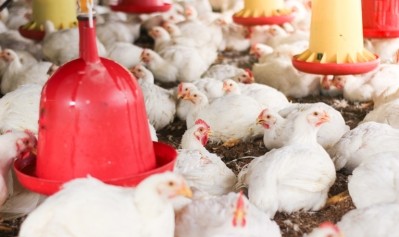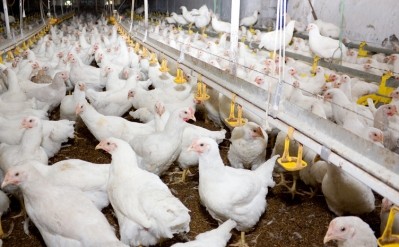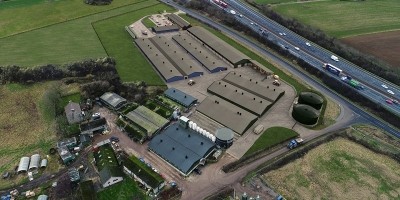Lallemand weighing up alternative strategies as zinc oxide in pig feed ban looms

David Saornil, product manager, swine applications, Lallemand Animal Nutrition, outlined potential approaches to get around the ZnO ban.
He said the company is honing in on strategies that involve a combination of management practices, nutritional modification of diets, including lower protein levels, and reduction of the buffer effect of the diets, but also the use of feed additives that have different modes of action but the same final goal, which is to improve gut health or to reduce the pathogen pressure in the gut.
“Lallemand Animal Nutrition is working on different product lines that are quite complementary from yeast derivatives to probiotics and primary antioxidants, as well as animal environment solutions to control microbial ecosystems around the animal,” he told us.
At the Zero Zinc Summit in Copenhagen this week, the company spoke about the outcome of a trial it undertook to test the effect of the supplementation of its Yang product in weanling piglets on growth performance especially when they start eating feed without ZnO. Yang, it said, is a combination of inactivated yeast fraction from two complementary species of Saccharomyces cerevisiae and one strain of Cyberlindnera jadinii.
Methodology
The trial evaluated, in total, 480 weanling piglets from four subsequent batches; they were distributed in eight nursery rooms of four pens each, in groups of 20 piglets/pen, said Lallemand Animal Nutrition.
The piglets were fed a two-phase feeding program, including a prestarter from weaning until 21 days post-weaning, and a starter between days 22 and 55; the pigs had free access to feed and water, it added.
Pens were randomly allocated to two treatments: a control (CON) which consisted of a standard post-weaning diet and the yeast (Y) based diet, which comprised the CON diet + 800 g/ton and 400 g/ton of test product in the prestarter and starter diets, respectively. The prestarter feeds were medicated with 2400 ppm ZnO.
The researchers recorded individual body weight, feed intake per pen, mortality, and daily diarrhea score per pen.
Findings
The team involved reported significant differences in final body weight (FBW), average daily gain (ADG) during the starter stage and overall, and in feed conversion ratio (FCR) during the starter phase, with Y-piglets showing higher BW (30.4 vs 31.6 kg), faster growth (449 vs 470 g/d overall), and lower FCR (1.66 vs 1.58).
Furthermore, they saw that the piglets in Y tended to grow faster (240 vs 255 g/d) and eat more (350 vs 382 g/d) at the prestarter stage. During the trial, diarrhea occurred in all the batches and pens around 4-5 days after the switch to the starter diet.
‘Yeast fed piglets coped better’
The piglets getting the Yang product in the prestarter feed coped better with the absence of ZnO, said Saornil.
“When we applied our product – Yang - in the prestarter feed, the piglets seemed to be more prepared than the piglets in the control group for the removal of the ZnO. I would say that piglets fed Yang in the prestarter diet already started to modulate their immune system and to reduce the pathogenic load in their gut, due to the undesirable bacteria binding effect of Yang. These effects will be amplified in the starter diets.”
The additional growth generated during the prestarter (>6%) phase was higher than the one generated in the starter phase. “But I would say the product has been effective in both cases.”
Mode of action of the yeast derivative
A key part of Yang’s mode of action centers around its adhesion to some bacterial species, especially E. coli, one of the main causes of diarrhea in piglets, said Saornil. When such adhesion is happening, the multiplication of pathogenic bacteria is much more difficult, so their total population is lower, and so the risk of diarrhea is reduced, he added.
Even when there is no diarrhea, he said the presence of pathogens in the gut causes a local inflammatory reaction in the intestine, depleting the piglet’s energy resources.
“Apart from reducing the presence of pathogens, Yang has also an interaction with intestinal receptors modulating the way the animals react towards that inflammation.”
The swine expert said it was important to apply a higher dose of the yeast derivative in the prestarter feed because challenges for the piglets and the risk of multiplication of pathogens is much higher immediately after weaning.
Source: F. Bravo de Laguna, C. Achard, E. Chevaux, D. Saornil, B. Bertaud, R. Horváth (2019).
Title: Effect of addition of a yeast derivative on piglets’ performance during post-weaning period
FeedNavigator is hosting a webinar on July 11 2019 on what the viable and practical alternatives are to the use of zinc oxide in pig rations.
Register for the free online event now!
Our speakers will include Lisbeth Shooter, who is a senior manager in SEGES, the pig research center in Denmark; she has overall responsibility for coordinating the pig innovation activities, and manages the feed efficiency team at the center. Lisbeth has good awareness of other pig markets having spent seven years in England working for BPEX, now AHDB Pork, advising pig producers in that market.
She will tell us about some of the research work undertaken at SEGES on alternative feed ingredients in terms of zinc oxide free diets.
We will also be joined by Alfons Jansman, the well-respected senior scientist at Wageningen Livestock Research, in the Netherlands; his areas of focus are digestive physiology in pigs, amino acid requirements and metabolism, and nutrition and health in pigs and poultry.
He will discuss post-weaning feeding strategies, such as reduced protein in weaner diets when medicinal zinc is removed, the impact of the cereal type and starch source used in piglet feeds, and the importance of sow feeding to encourage a higher milk yield and wean more uniform pigs.
Don’t miss out. Sign up for this timely webinar now!
Charlotte Lauridsen, head of research, immunology and microbiology, in the Department of Animal Science, at Aarhus University in Denmark, will also be on our panel. Her research activities primarily concern the nutrition and physiology of farmed animals with a focus on understanding the benefits of vitamins, lipids, fatty acids, natural and synthetic antioxidants and selected minerals and feed additives for monogastric animal liveability, health, reproduction, nutrient utilization and product quality.
She will report on the role certain feed additives can play in reducing the occurrence of post-weaning diarrhea when zinc oxide is removed from the piglet diet.















